a curious case of ice terraces
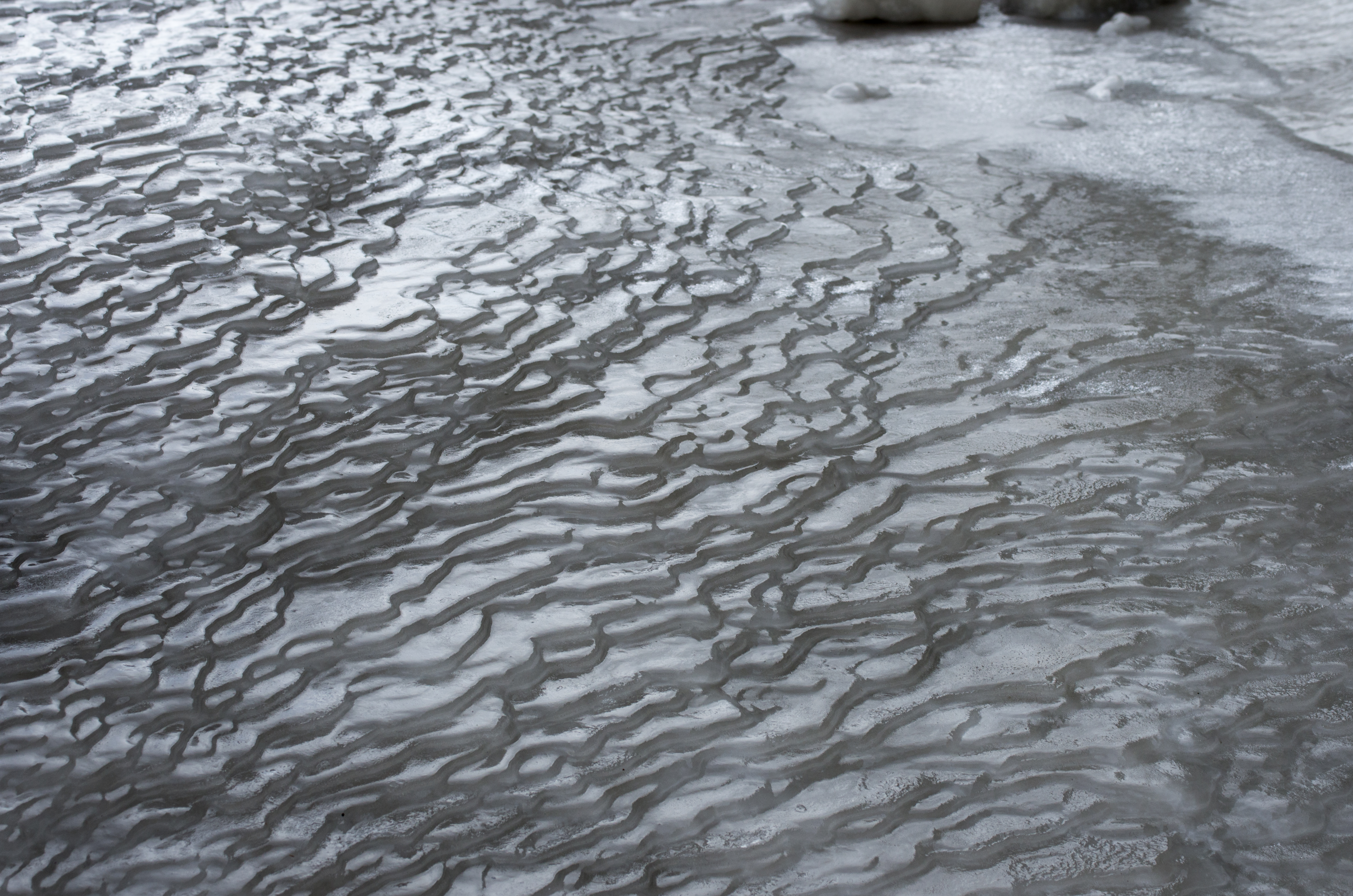
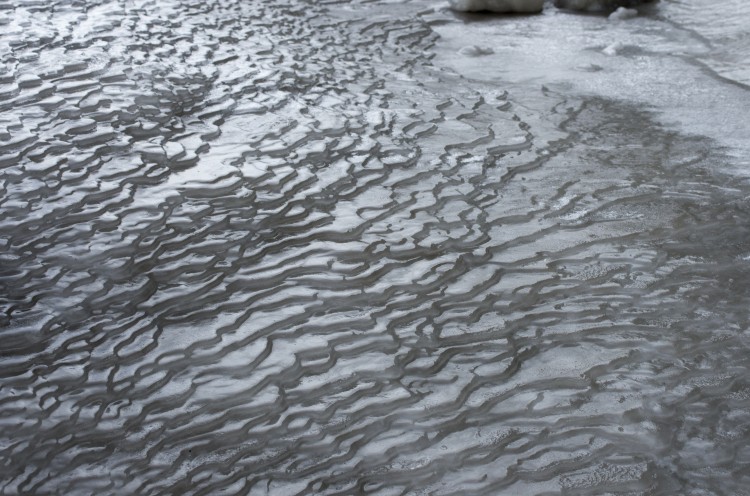 Here in Boston, we’ve been blanketed by a record-breaking 100+ inches of snow. It has been too cold for any of it to melt until a couple of days ago when it was briefly above freezing. On this rare day of unusual warmth, we spent some time scouting for ice formations in our neighborhood. Excitingly, we found something we’d heard of but never seen before, ice terraces!
Here in Boston, we’ve been blanketed by a record-breaking 100+ inches of snow. It has been too cold for any of it to melt until a couple of days ago when it was briefly above freezing. On this rare day of unusual warmth, we spent some time scouting for ice formations in our neighborhood. Excitingly, we found something we’d heard of but never seen before, ice terraces!
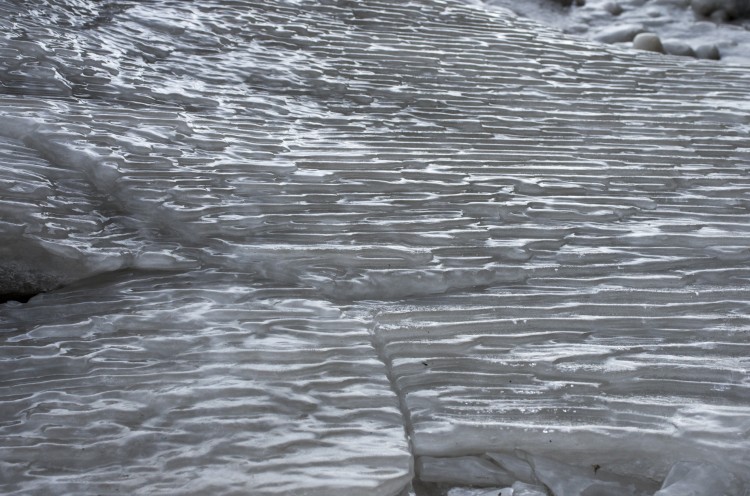
At first, we were mystified by the presence of the ice terraces. All around us were normal, fluffy piles of snow, why this one spot rendered as a cascade of glassy terraces? Then a car drove by and we were drenched by a wave of ice cold water and it all made sense. These ice terraces were forming on top of a snow bank that was next to a giant pothole filled with water from snow melt. Every time a car drove by, it would splash the snow pile with water. This water would pool at the top of the snow pile and run down along its sides. As it froze it coated the snow’s upper surface with a landscape of precisely stepped terraces. While on the pile’s steep edges, the water froze into the more amorphous, dripping configurations of stalactites.
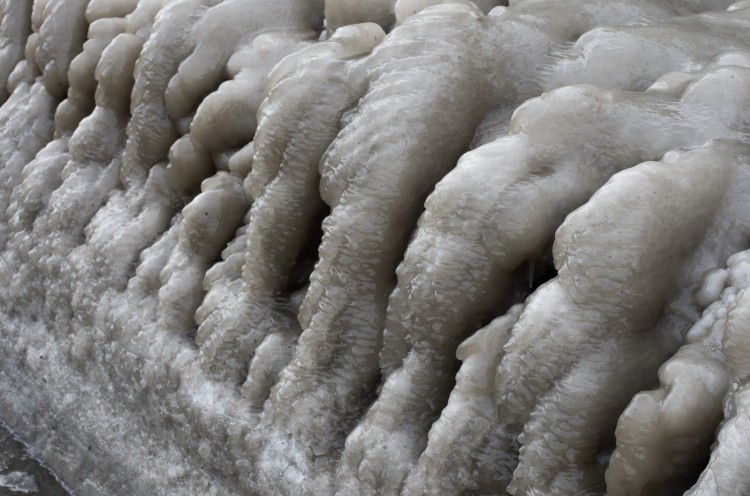
Comparison: Ice Terraces vs. Sinter Terraces

Several years ago, we read about the possibility of ice terraces while researching sinter terraces. Sinter terraces are rock formations that emerge rapidly in geothermal areas due to chemical precipitation in mineral rich water. We first saw such formations at the Wai-O-Tapu “thermal wonderland” in New Zealand where silica rich water produces delicate stepped terraces of geyserite at a rate of up to .1cm / year. We’ve also seen similar forms at Yellowstone National Park where water rich with calcium precipitates into travertine terraces at Mammoth Hot Springs at an astonishing rate of up to 30 cm / year!
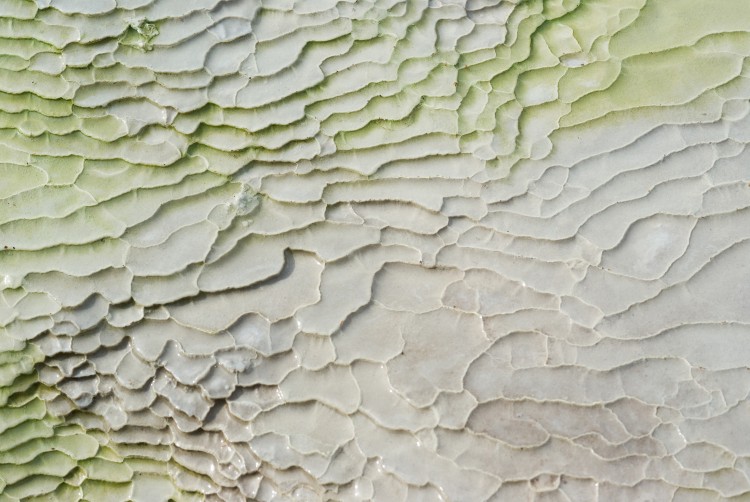 The emergence of such terraces is a complex problem to understand because it involves a number of coupled processes. Minerals precipitate from the water into stone terraces due to a complex set of conditions involving flow velocity, cooling, evaporation, changes in pH and activity of microorganisms. As the terraces form, the landscape over which the water flows is changing as well.
The emergence of such terraces is a complex problem to understand because it involves a number of coupled processes. Minerals precipitate from the water into stone terraces due to a complex set of conditions involving flow velocity, cooling, evaporation, changes in pH and activity of microorganisms. As the terraces form, the landscape over which the water flows is changing as well.
We suspect these ice terraces formed practically overnight. And when we checked back the next day, they were gone. Each one was quite shallow, perhaps 1cm high and no more than 10 to twenty 20cm wide. In contrast, these sinter terraces we observed in New Zealand were mostly no larger than a fingernail and the travertine terraces at Mammoth Hot Springs in Yellowstone are several feet in size.
It’s really fascinating to see similar patterns emerge in natural systems with drastically different chemistry and scales. If you are interested in learning more about the process behind the formation of these incredible terraces, I recommend looking up papers by Øyvind Hammer or Nigel Goldenfeld. You can view my photographs of terrace formations on Flickr.
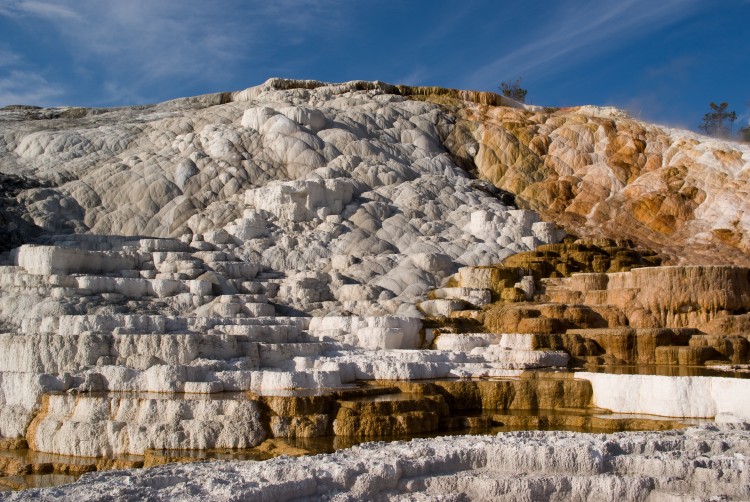

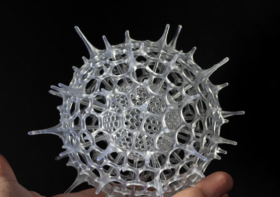
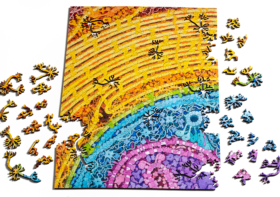

Martin Fischer
Amazing!!! This phenomen seems to be quite rare – I observed on rocks of Lake Ontario last week (see linked website), and your post was the only reference to those ice terraces I could find on the entire internet. You write that you have heard of this phenomenon – would you be so kind to send me the link to where you read this?
I cannot figure out what mechanism makes the ice terraces so regular – it looks to me like each terrace is the same height, independent of the incline. Fascinating :-)
Jesse Louis-Rosenberg
Wow! Amazing photos. What a find.
We found it mentioned in a paper by Oyvind Hammer which is linked at the end of the post. He references another paper by Ueno here: https://arxiv.org/pdf/cond-mat/0401593.pdf . It seems related to something more commonly seen which is ripples on icicles. Hammer postulates that it’s related travertine dams in that they are both laminar flows that deposit more material where it’s moving faster because it cools faster.